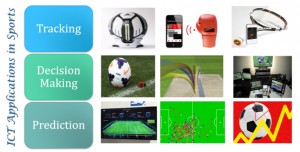6 mins read
ICT for Sports: A Whole New Ball Game By Prerna Lal Faculty, International Management Institute, New Delhi

December 22, 2024
Copyright 2023, IT Voice Media Pvt. Ltd.
All Rights Reserved

 business of sports are organized, played and viewed nowadays. Introduction of technology- enabled sports equipment, wearables, cameras, etc. are now helping players, trainers, coaches, physiotherapists in getting the real-time data as well as feedback across a wide range of performance factors and other human body involving metrics such as biomechanics, stress levels etc.1. Furthermore, ICT has also enhanced the experience of sports fans and vast television and online viewing audiences- be it booking the tickets for tournaments and leagues online, interacting with their favourite team/s or players through social media, or watching the game live in the ground, on TV or online using laptop, mobile or smart phones.
business of sports are organized, played and viewed nowadays. Introduction of technology- enabled sports equipment, wearables, cameras, etc. are now helping players, trainers, coaches, physiotherapists in getting the real-time data as well as feedback across a wide range of performance factors and other human body involving metrics such as biomechanics, stress levels etc.1. Furthermore, ICT has also enhanced the experience of sports fans and vast television and online viewing audiences- be it booking the tickets for tournaments and leagues online, interacting with their favourite team/s or players through social media, or watching the game live in the ground, on TV or online using laptop, mobile or smart phones.